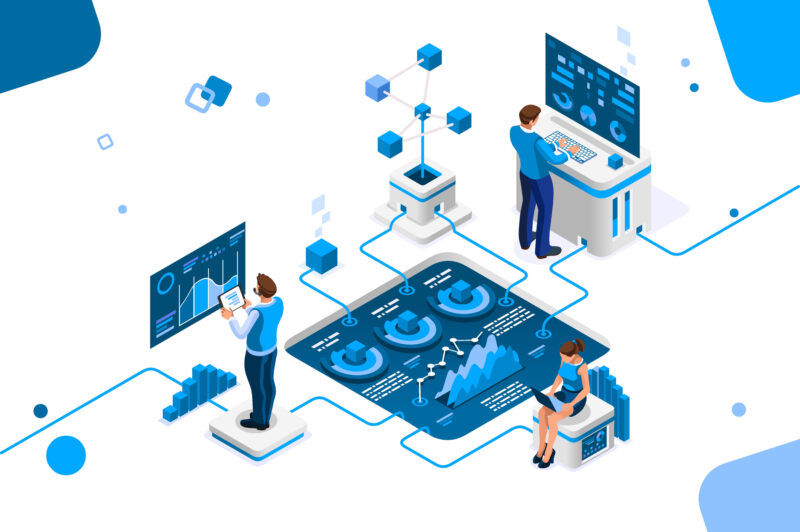Resources
Back to AllWhy Federal SAM Programs Fail, and How to Fix Them

Federal SAM Programs Can Succeed
Federal customers that approach SAM as a program achieve measurable outcomes that demonstrate success. InSequence’s customers that approach SAM the right way have results that speak for themselves:
- 98% software visibility
- 87% of software spend proactively managed
- Delivered over $100 million in cost avoidance
- Generated $3 million in direct savings
- Proactive and successful audit response
Why Federal SAM Programs Fail
In the Federal Government, Software Asset Management (SAM) programs are often launched with great expectations: visibility into software usage, reduced waste, and better control over licensing and spend. Yet, too many of these programs fail to achieve their objectives or stall out after the first year.
At InSequence, we’ve seen both sides of this story. On one federal engagement, our SAM program achieved 98% asset visibility, 87% of software spend proactively managed, delivered over $100 million in cost avoidance, and generated $3 million in direct savings. The results didn’t come from luck, they came from structure, accountability, and focus.
So why do so many programs fail? Spoiler alert – it’s not because the customer picked the wrong tool! In our vast Federal experience with over 45 engagements across Federal, State and local, and private sector customers, we’ve identified 7 common causes of failure:
1. Lack of Executive Sponsorship
SAM programs cut across procurement, IT operations, finance, and cybersecurity. Without an empowered executive sponsor to break down silos, decisions get delayed, priorities conflict, and momentum fades.
According to the 2024 Gartner® The Future of the Software Asset Manager Is About Governance, Not Counting Licenses report:
“By 2026, organizations that reposition software asset managers from centralized execution to strategic governance and oversight will have 30% more efficient software spend than those that do not.“
Fix: Establish a senior-level champion who can remove barriers, enforce accountability, and make SAM a strategic enabler, not just a compliance project.
2. The Wrong Focus
Too often, SAM teams are built around tool operators instead of analysts and negotiators. The focus becomes running discovery scans and reconciling entitlements, rather than delivering insight that drives savings and risk reduction.
As per the 2024 Gartner Market Guide for Software Asset Management Tools report:
“Organizations with a low level of maturity that invest in software asset management (SAM) tools without developing a three-to-five-year SAM vision will struggle to obtain value out of their SAM tooling investments.”
Fix: Build a multidisciplinary team: part licensing expert, part data analyst, part strategist. The technology supports the process, not the other way around.
3. “Boiling the Ocean”
Many SAM programs fail by trying to tackle every software product, every publisher, and every data source at once. The result: analysis paralysis and inconsistent data quality.
Fix: Start with a focused, high-value set of publishers. Prove success, expand gradually, and continuously refine the scope based on data maturity and ROI.
Each software application is deployed differently. Partner with your SAM experts to identify vendors with applications that represent a large financial optimization opportunity while also being deployed in a manner that lowers the technical barrier to initial success.
4. Lowest Bidder Syndrome
SAM engagements are often awarded to the lowest-cost bidder, often to firms with little real SAM experience. These firms typically hire resources off the street that may or may not have SAM experience. When they do have experience, it is typically tool experience, not experience achieving strategic quantifiable outcomes. The result is predictable: untrained resources, poor planning, and a engagement “set up to fail” because it was not setup as a program.
Fix: Evaluate bidders based on demonstrated results, maturity models, and referenceable experience. Ask for measurable outcomes, not just tool certifications.
Specialized SAM providers like InSequence invest in training, methodologies, procedures, scripts, tooling, and playbooks to to develop a practice that enables their SAM resources to deliver predictable outcomes.
5. Do It Yourself (DIY)
Some SAM programs take a DIY approach. Resources with no SAM experience typically don’t value the multi-disciplinary approach required for successful SAM. They simply don’t know because they’ve never done it.
According to the 2025 Gartner Cut Software and Cloud Costs With the Right SAM and FinOps Managed Service report:
“Many IT budget holders recognize the need for SAM and FinOps to optimize costs and reduce waste. However, advancement of these disciplines internally is challenging due to skills shortages and the complexity of modern IT environments.”
Fix: Bring in experts that have proved they can deliver a successful SAM program. The goal is not to setup a short term engagement that deploys a tool; the goal is to build a program that continually positions the organization to optimize technology spend.
6. Poorly Written Requirements
Software Asset Management solicitations frequently under-specify what success looks like. Vague requirements like “implement SAM” leave too much to interpretation, resulting in inconsistent execution. Additionally, System Integrators bidding on RFPs allocate the least amount of FTE as possible to drive down the cost of their offer. The result is that SAM programs end up lacking the resources needed to be successful.
As stated in the 2025 Gartner Cut Software and Cloud Costs With the Right SAM and FinOps Managed Service report:
“SAM and FinOps managed services risk suboptimal performance or failure when the statement of work (SOW) includes excessive dependencies and lacks sufficient commitment by the provider to actively execute the disciplines and realize benefits.”
Fix: Government buyers should take time to define good requirements, measurable KPIs such as:
- Percentage of assets under management
- Percentage of spend proactively managed
- Cost avoidance and realized savings metrics
- Software rationalization and risk reduction outcomes
- Subject Matter Expertise with Major Software Vendors
7. Lack of Operational Independence
System integrators (SIs) who also sell or resell software cannot provide truly independent SAM advice. It’s like asking the car dealer to validate your maintenance plan.
Fix: Separate SAM governance and analytics from the entities that procure or resell software. Independence ensures recommendations are based on mission and value, not reseller incentives.
Many of the top SAM managed service providers are owned by value added resellers (VARs) who use data from their SAM services to drive pricing and sales activities. This conflict of interest should be avoided, especially in the public sector where the Federal Acquisition Regulation (FAR) prohibits unequal access to information that gives one firm an unfair competitive advantage.
How to Fix Federal SAM Programs
Federal agencies shouldn’t have to spend their limited bandwidth wrestling with tools, connectors, and reconciliations. Their focus should be on strategic negotiations, vendor risk, and optimizing enterprise licensing agreements. When executed correctly, SAM isn’t just about compliance. It’s about control, foresight, and turning uncertainty into predictable outcomes.
Federal SAM and IT leadership have two options to ensure effective SAM:
1. Engage with a Federal SAM Managed Service
A SAM managed service model, like InSequence SAM365® delivers consistent visibility, actionable analytics, and ongoing cost optimization, all backed by SLAs and performance metrics. Moreover, SAM managed services focus on delivering process and governance services and lifecycle management services that help customer’s build a continually operating SAM program.
SAM Managed Services should deliver:
- Lifecycle Management
- Policy and Procedure Development
- Roles and Responsibilities Definition
- Reporting & KPI Definition
- Software Discovery and Inventory
- Purchase & Contract Tracking
- Effective License Positions
- Tool Implementation & Operation
- Audit Preparation and Defense
Managed Services like InSequence SAM365® bring expertise, bodies of knowledge, and tooling to rapidly standup a successful SAM program. Furthermore, Managed Services can bring partial resources so that customer’s aren’t paying for a full FTE when a partial would do (i.e. sitting around waiting to do audit defense while there are no ongoing audits).
2. Invest in Internal SAM Resources
Many customers want to build their own SAM program using internal resources. This approach takes more time than engaging a SAM Managed Service and risks personnel departures interrupting progress.
Internal SAM programs must build expertise across a variety of disciplines: tooling, entitlement data, effective license positions, vendor expertise, process & policy, lifecycle management, documentation, audit response, and KPI definition. Building this expertise in-house will take years and will in the long run be more expensive and less likely to succeed than engaging a managed service.
About InSequence & SAM365®
InSequence’s SAM365® managed service helps federal agencies achieve operational independence and measurable outcomes in their SAM programs. Our proven framework delivers visibility, accountability, and cost optimization across complex hybrid environments.
We focus on building long-term SAM programs in partnership with out customers. Our goal is to enable our customers to position themselves to be able to strategically manage and optimize their technology spend
We only succeed when our customers do, we are invested in customer success.
Learn About SAM365®
Setup a discussion to learn about our SAM philosophy, and how our team is devoted to your SAM success.
Source Attribution
- Gartner, The Future of the Software Asset Manager Is About Governance, Not Counting Licenses, Jaswant Kalay, Yolanda Harris, 2 July 2024
- Gartner, Market Guide for Software Asset Management Tools, Jaswant Kalay, Ciaran Hudson, et al., 25 November 2024
- Gartner, Cut Software and Cloud Costs With the Right SAM and FinOps Managed Service, Stephen White, Yoann Bianic, 9 July 2025
- GARTNER is a registered trademark and service mark of Gartner, Inc. and/or its affiliates in the U.S. and internationally and is used herein with permission. All rights reserved.


